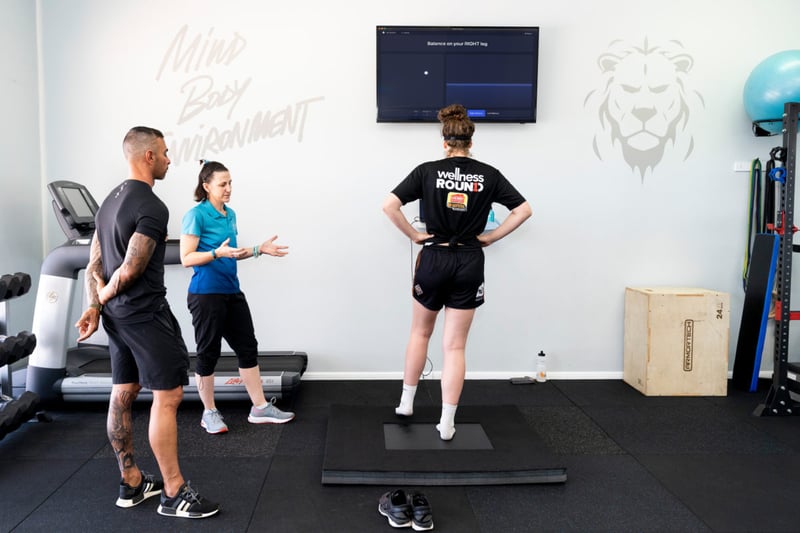
With every new or prospective customer, one of the most common questions we get is “How often should we assess?” Our answer to this is always the same: “As often as you’re willing to do something about it.” This may seem a bit blunt but, simply speaking, we need to understand that if you aren’t willing to make changes based on the data, what is the value in collecting data? As we go into more depth, the answer to this question actually depends on a few different factors. Below are follow up questions that can be utilized to help guide what the optimal frequency of assessment is.

Different types of data should have different goals associated with their collection. It is important to understand that different assessments can tell us different information. Acute interventions such as adjustments to daily training and recovery protocols are going to require more frequent data collection. Similarly, if you are interested in identifying fatigue or recovery, more frequent assessment is also required because an individual’s recovery status can change dramatically in a short period of time.
Organizations that are interested in utilizing the Sparta Movement Health Platform to identify and manage fatigue will need to assess more frequently than those with different goals. Customers with smaller rosters or groups of individuals will oftentimes do this, performing assessments multiple times per week, or even on a daily basis during the peak season. If the goal is more generally to identify an individual’s needs and injury risk, the assessments can be further apart. This is more typical during the offseason or between deployments, for example. For chronic adaptation to occur, oftentimes real structural changes need to happen in order to improve both neurological and physiological functions. This takes time. A good rule of thumb is to assess every 3-4 weeks, or within at least 30 days of the previous assessments. Consistent assessment is necessary to allow for enough data to become meaningful, so once or twice a year just won’t cut it.
The more we can standardize when and how assessments are performed the easier it is to compare data historically. We are able to control for some of this by understanding the context of when the assessment is done. This is absolutely important when interpreting provided information, and needs to be a consideration for all organizations. For example, if we assess a soldier initially after a long weekend of rest and recovery then reassess them three weeks later, immediately after a 20-mile ruck, we need to understand the contexts are much different. That doesn’t mean the data is any less reliable or valid, we just need to understand it is a valid measure of that individual at that given point in time. Ideally, when utilizing the assessments to identify more chronic changes or adaptations, individuals are in a rested state comparable to their previous assessment (similar to being in a fasted state before a blood draw).
This is a critical component to understand, as collecting data simply for the sake of collecting data can not only be a waste of time but a detriment to trust and culture for an organization. Individuals will very quickly begin to feel like research study subjects if data is collected and never again shared, discussed, or utilized. Even in high functioning organizations, this can quickly erode trust. From a data hygiene perspective, this can also be a huge problem as without a simple understanding of why data is being collected the reliability of the data can be negatively impacted. This can be the result of lack of effort, lack of honesty, or even pure sabotage. To use a simple example, it is easy to sabotage a clinically reliable and valid fasting blood glucose test and make it unreliable by simply not fasting.
If you are going to collect data, you need to be prepared to listen to what the data is telling you, ego and emotion aside. If you are utilizing the Sparta Movement Health Platform to identify an individual’s needs from the Jump Scan, you need to be willing to change their training plan based on the data. Otherwise, what’s the point? One important factor to point out, is that this doesn’t mean that we always have to change what you are already doing after data collection. Sometimes the data will show improvements or positive changes that we are chasing, so sticking to the current plan may be the best option! The assessments utilized in the Sparta Movement Health Platform should guide a decision-making process and educating and engaging the end-users can only improve outcomes. While the individual being assessed may not like what the data is telling them, if they understand and experience how it is being utilized it becomes much easier to create trust and influence change.
This third point is probably the most important question to ask as it tends to lay the groundwork for the others. What is actually achievable for you and your organization? If you have an organization of 1,000 individuals that need to assess and 2 systems, it simply isn’t going to be practical to assess all 1,000 people every single day. It is important to understand what limitations actually exist in the real world, but also how we can bend the rules to allow us to assess more frequently when needed. For example, individuals who are at high risk or have greater exposure can be prioritized and assessed more frequently, while individuals at lower risk can be assessed less frequently. The practicality of the Sparta Movement Health Platform allows for an extremely short assessment time, so the larger question of practicality becomes the number of individuals that need to assess in a given time. In many cases, our partners will teach individuals how to operate the system themselves which improves buy-in and enables practitioners to continue to build trust!